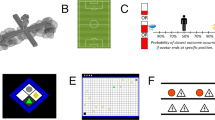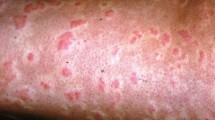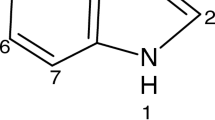Abstract
Traina and Aleksandrowicz reported recently1 that, in contrast to the findings of Pasteur, Vallery-Radot, Halpern and Holtzer2, guinea pigs which survived a previous exposure to anaphylactic shock during antihistaminic treatment were protected against a second challenging injection of the sensitizing agent given one day later. These experiments were carried out on thirteen guinea pigs, of which two were used for control. The implication of such a result might become extremely broad from the point of view of the mechanism of action of antihistaminic drugs.
This is a preview of subscription content, access via your institution
Access options
Subscribe to this journal
Receive 51 print issues and online access
$199.00 per year
only $3.90 per issue
Buy this article
- Purchase on SpringerLink
- Instant access to full article PDF
Prices may be subject to local taxes which are calculated during checkout
Similar content being viewed by others
Author information
Authors and Affiliations
Rights and permissions
About this article
Cite this article
CHESSIN, M., ERCOLI, N. Duration of Protection by Antihistaminics in Anaphylactic Shock. Nature 164, 957 (1949). https://doi.org/10.1038/164957a0
Issue date:
DOI: https://doi.org/10.1038/164957a0



